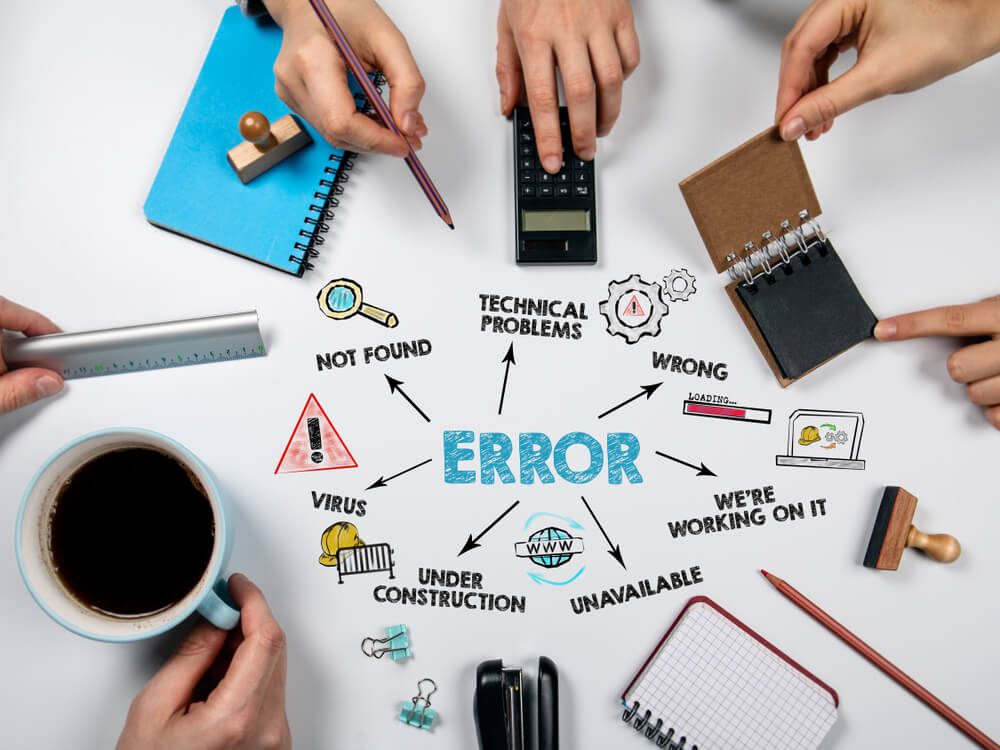
How To Avoid or Fix 7 Top Technical SEO Errors
Technical errors keep your audience from checking your content, even with a well-written article or inspiring video. That explains why an SEO agency spends more time on technical search engine optimization (SEO) than on other strategies. They ensure search engines index and rank the sites they manage well.
This guide talks about the top technical SEO errors that need your utmost attention:
- Missing XML sitemaps
- Indexing issues
- Having slow site speeds
- Not fixing duplicate content
- Overlooking mobile optimization
We will give you solutions for these as well, so let’s go!
Watch this video to learn how Digital Authority Partners tackles Technical SEO!
1. Missing XML Sitemaps

An XML sitemap is a file that contains all your website's essential pages. Adding an XML sitemap helps Google crawl through your site, understand your content, and show your pages whenever there is a query. So it will be hard to rank if your site has many pages but no sitemap.
Use Google search to check if your site has a sitemap. Place your domain name in the search bar and add "/sitemap.xml" (e.g., catscatio.com/sitemap.xml).
If you have a sitemap, you get a page with chunks of code and a message that begins with "This XML file..." But if your site is missing one, you get a 404 page, meaning the page is not found, and that means you need the help of a web developer.
The web developer will do the following (among many other tasks) for you:
- Create an XML sitemap for your site and submit it to Google, making sure it is updated whenever needed.
- Make sure your site uses consistent URLs (e.g., consistently using HTTP if your site is http://www.catscatio.com/ and not HTTPS)
- Add canonical tags to your pages where needed and include only canonical URLs in the sitemap.
2. Indexing Issues
Indexing issues prevent users from seeing your pages because unindexed pages would not appear in search results. Such issues typically happen when:
- You have duplicate content.
- You changed your website's URL structure changes, leading to broken links.
- You have technical errors like robots.txt file misconfigurations or 404 errors.
- Search engines perceive your content as low-quality, thin, or unoriginal content.
- Resources such as JavaScript, images, and CSS files are blocked by robots.txt file.
- Sitemaps are improperly formatted, contain errors, or not submitted to search engines.
- Page speed is slow.
To find out if you have indexing issues, set up a Google Search Console account for your site. This platform will run a technical SEO audit of your site and report which pages are valid, invalid, have errors, etc. It also summarizes site issues. That way, you or your site developer can go to your site’s backend knowing what to fix.
3. Slow Site Speeds

Slow-loading sites lose customers faster. Visitors will head to your competitors' sites if yours takes more than three seconds to load. Since page speed is part of Google’s core web vitals that also affect your ranking, be sure to check for the following issues that slow down your site:
- Large images siges
- Poorly written codes including JavaScript and CSS
- Too many plugins
- Uncompressed files
- External scripts such as advertisements and social media widgets
- Slow or unreliable hosting
- A sudden surge in traffic
- Large databases
- Outdated software such as an old version of PHP
Run your site through Google PageSpeed Insights to see if it has any of the above issues. This platform diagnoses your site's performance, summarizing areas that you can fix and telling you what you can save by addressing them. Strive to have all reported issues fixed immediately to boost your site’s loading speed.
4. Duplicate Content
Duplicate content is a common technical SEO error that confuses Google crawlers as to which page to crawl and which serve up in response to a query. Duplicate content competes for ranking and ends up harming your site’s overall authority. The following typically leads to duplicate content:
- URL variations or multiple URLs with similar content (e.g., www and non-www versions of a site)
- Printer-friendly versions of web pages accessible to search engines
- Using session IDs in URLs
- Product pages with different options, such as size and color
- Scraped content or content copied from another site
- Having separate HTTP and HTTPS versions of a site
- Sitemaps containing multiple URLs with similar content
- Faceted navigation , which allows users to refine search results by different criteria
Find duplicate content using tools like Siteliner, Google Search Console, and SemRush. Have your developer fix them ASAP using the following (depending on what the cause is):
- Use rel="canonical" tag to specify preferred version of a page.
- Implement 301 redirects to direct users and search engines to the correct page.
- Consolidate duplicate pages into one authoritative page.
- Block duplicate pages from search engines with robots.txt file.
- Ensure unique URL structure for each page.
- Use unique page titles and descriptions.
- Regularly monitor for duplicate content.
5. Overlooking Mobile Optimization

More people are using mobile devices to search the web, and they tend to head to your competitor's mobile site if your pages do not load properly or take too long to load. Create a mobile-friendly site by following Google’s mobile-first indexing best practices.
Google strongly recommends that you have a mobile version of your pages. Follow these mobile-first best practices:
- Use a responsive mobile layout so that your site scales to fit any mobile device screen.
- Compress images using tools like Kraken.io for faster loading
- Avoid Adobe Flash because many mobile devices do not support it; use HTML5 for animations instead.
- Do not use pop-ups because they are difficult to view on smaller mobile screens, not to mention difficult to close.
- Use large and easy-to-read fonts; bold important lines of text and opt for black text color.
Summing Up
If your site struggles with ranking despite having great content, look for technical SEO issues. Some of these issues are easy to fix, like improving site speeds and removing duplicate content. Meanwhile, you may need the help of an experienced web developer for more advanced technical errors.
Fix these issues ASAP with the help of an expert SEO agency. Call Digital Authority Partners today.
Want To Meet Our Expert Team?
Book a meeting directly here




